ChatGPT:Ravello is a picturesque town located on the Amalfi Coast in southern Italy’s Campania region. Perched high on a cliff, it offers breathtaking views of the Mediterranean Sea. Known for its historic villas, such as Villa Cimbrone and Villa Rufolo, Ravello is famous for their stunning gardens and panoramic terraces. The town also boasts a rich cultural heritage, with its annual Ravello Festival celebrating music and arts. The charming streets, beautiful architecture, and serene ambiance make Ravello a popular destination for tourists seeking beauty and tranquility.
Ravello has a rich history and has undergone significant development over the centuries. Here is a brief overview:
Early History
- 5th-6th Century: Ravello was likely founded as a refuge from the barbarian invasions that plagued the Roman Empire.
- 9th Century: Became part of the Duchy of Amalfi, a powerful maritime republic.
Medieval Period
- 11th Century: Ravello began to flourish as a trading town, benefiting from its strategic position and the protection of the Duchy of Amalfi.
- 1086: The construction of the Duomo di Ravello, dedicated to Saint Pantaleone, commenced.
- 12th Century: The town reached its zenith in wealth and influence. Important families, such as the Rufolo family, built magnificent villas and palaces.
Renaissance to 19th Century
- 14th-15th Century: Ravello’s decline began as Amalfi’s power waned and trade routes shifted.
- 16th Century: The town suffered from internal strife and piracy, contributing to its further decline.
- 17th-18th Century: Ravello remained a quiet, largely agrarian community with limited growth.
19th Century
- 1851: The rediscovery and subsequent restoration of Villa Rufolo by Scottish botanist Sir Francis Nevile Reid revived interest in Ravello.
- Late 19th Century: Ravello started to attract artists, writers, and musicians, including Richard Wagner, who found inspiration in the town.
20th Century to Present
- 20th Century: Ravello began to develop as a tourist destination, with its historical sites, beautiful landscapes, and cultural events drawing visitors.
- 1953: The first Ravello Festival was held, establishing the town as a cultural hub.
- Late 20th Century: Efforts to preserve and restore historical buildings intensified, with many villas and churches being restored to their former glory.
Modern Day
- 21st Century: Ravello continues to be a major tourist attraction, renowned for its stunning views, cultural events, and historical architecture. The town has embraced tourism while maintaining its historical charm and natural beauty.
Ravello’s history is characterized by periods of prosperity and decline, but its enduring beauty and cultural significance have cemented its status as a jewel of the Amalfi Coast.
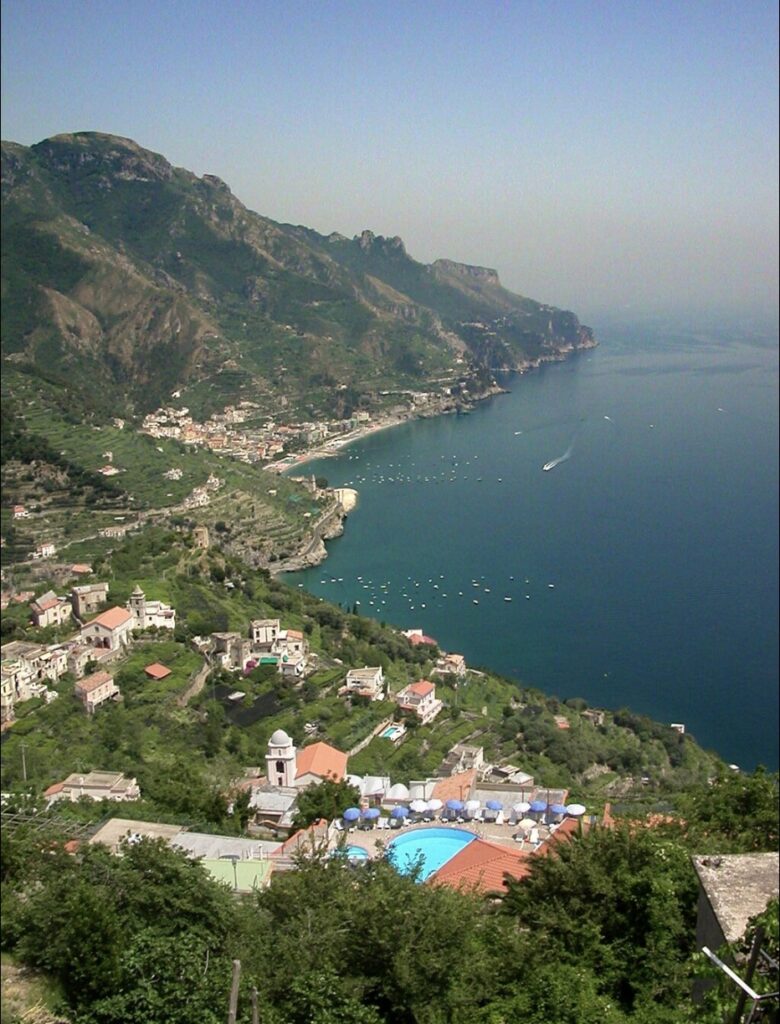
Ravello is home to numerous historical monuments and tourist attractions that draw visitors from around the world. Here is a list of some of the most notable ones:
Historical Monuments
- Villa Rufolo: A historic villa known for its beautiful gardens and panoramic views. It dates back to the 13th century and has hosted numerous artists and musicians, including Richard Wagner.
- Villa Cimbrone: Famous for its Terrace of Infinity, offering breathtaking views of the Mediterranean Sea. The villa’s gardens are filled with statues, temples, and grottoes, World Heritage site also.
- Duomo di Ravello (Cathedral of Ravello): Dedicated to Saint Pantaleone, the cathedral features a beautiful bronze door, a 13th-century pulpit, and the Chapel of Saint Pantaleone, which houses the saint’s relics.
- San Giovanni del Toro Church: An 11th-century church known for its medieval frescoes and mosaic pulpit.
- Church of Santa Maria a Gradillo: A small, historic church with a unique square plan and medieval architecture.
Tourist Attractions
- Ravello Festival: An annual arts and music festival held in the summer, featuring concerts, performances, and exhibitions in various historical locations, including Villa Rufolo.
- Terrace of Infinity: Located in Villa Cimbrone, this terrace offers one of the most stunning views of the Amalfi Coast.
- Ravello’s Town Square (Piazza Vescovado): The main square of Ravello, surrounded by historic buildings, cafes, and shops. It’s a perfect spot to relax and enjoy the town’s ambiance.
- Ravello Concert Society: Offers classical music concerts in various historic venues around Ravello, adding to the town’s cultural allure.
- Ravello Gardens: The well-maintained gardens of Villa Rufolo and Villa Cimbrone, known for their beauty and tranquility.
- Corso Italia: The main street of Ravello, lined with shops, restaurants, and cafes, providing a charming place to explore local culture and cuisine.
- Auditorium Oscar Niemeyer: A modern cultural venue designed by the famous Brazilian architect, hosting concerts, conferences, and events.
These historical monuments and tourist attractions make Ravello a captivating destination, rich in history, culture, and natural beauty.
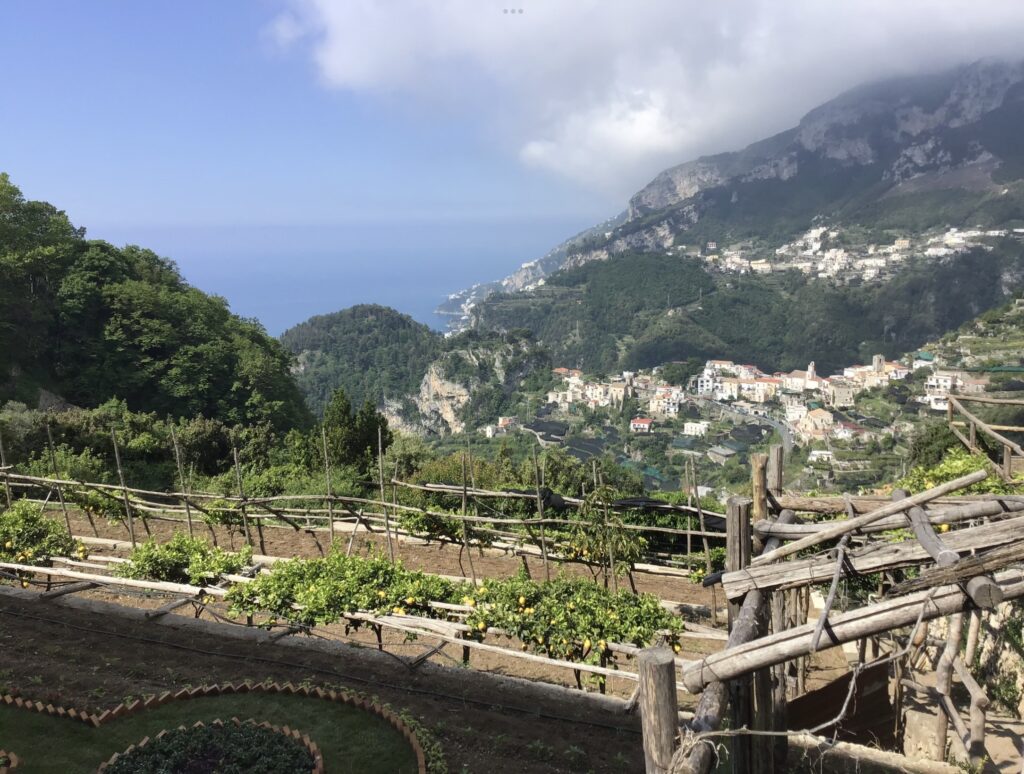
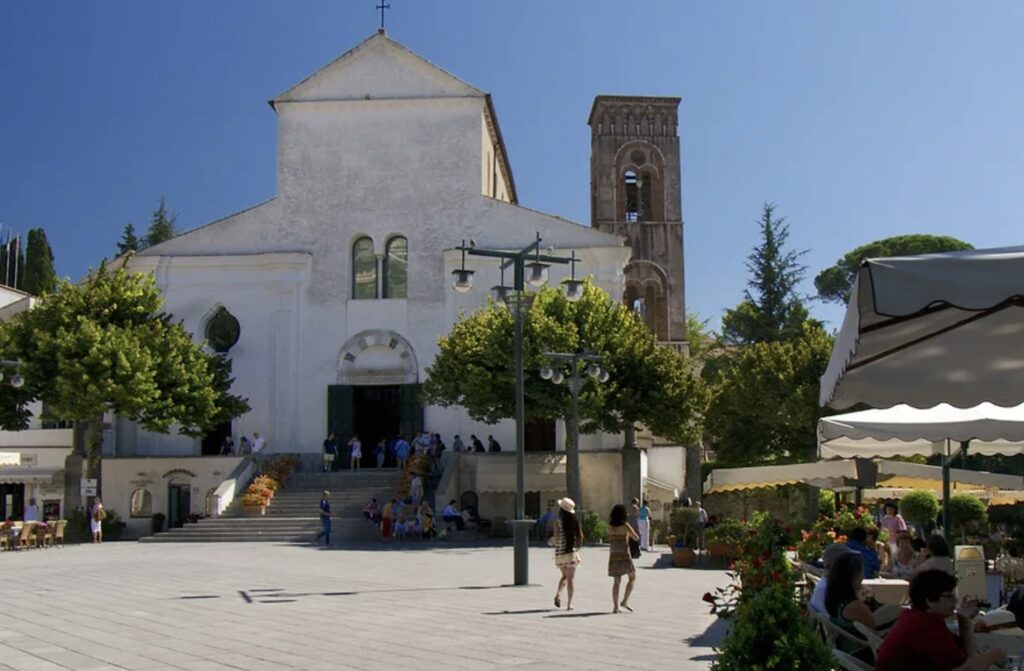
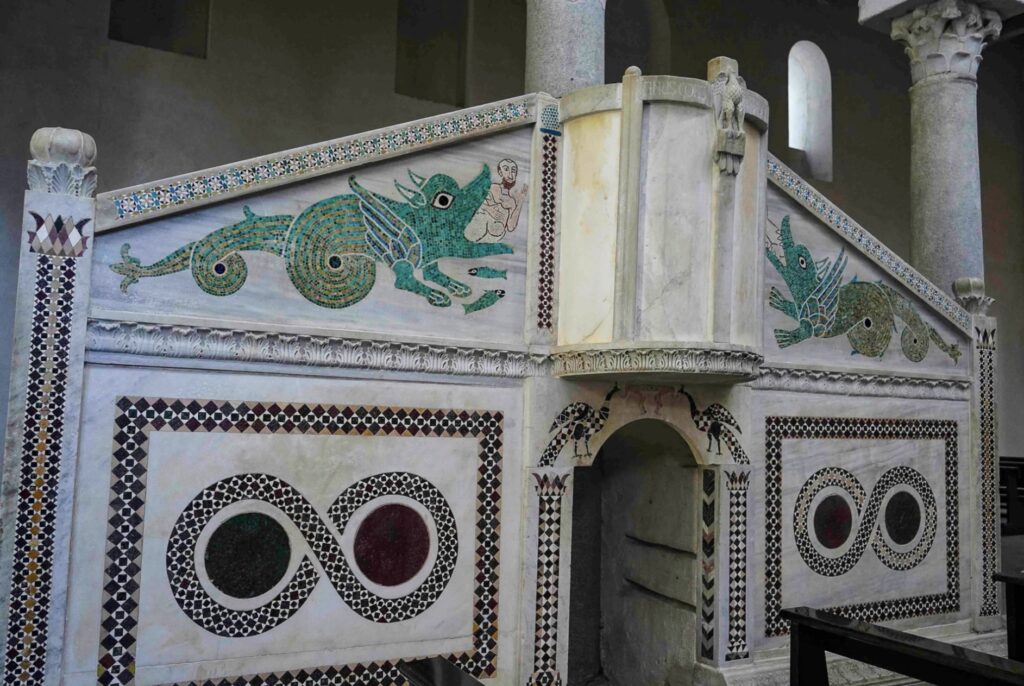
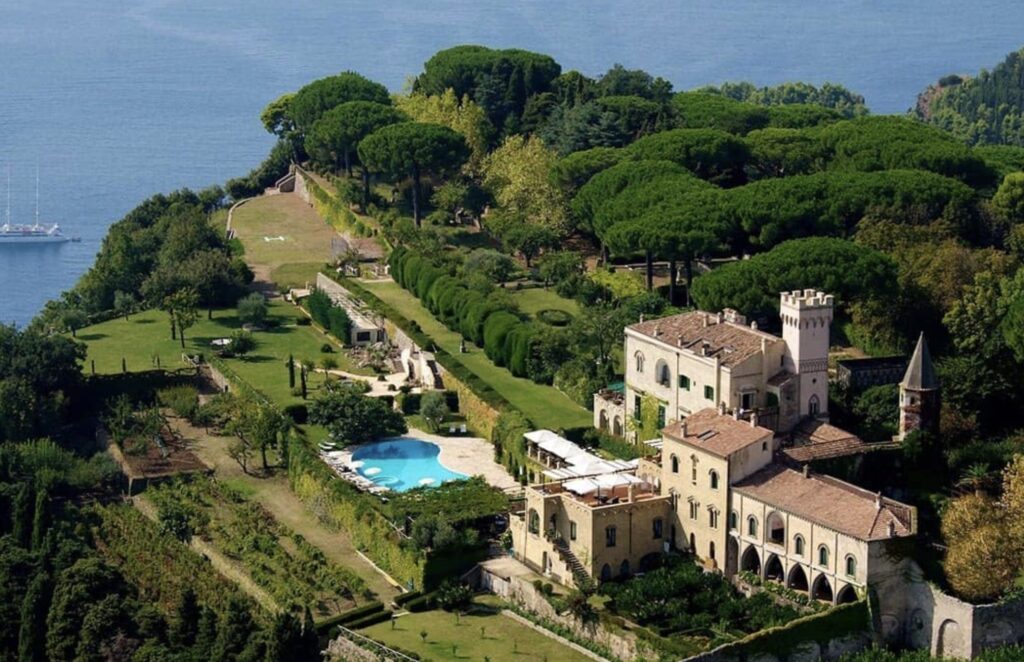
Villa Cimbrone
Overview
Villa Cimbrone is a historic villa located in Ravello, on the Amalfi Coast of Italy. It is famous for its beautiful gardens, stunning views, and significant cultural heritage. The villa, with its blend of medieval and classical architecture, is one of Ravello’s most iconic landmarks.
History
- 11th Century: The origins of Villa Cimbrone date back to at least the 11th century when it was initially a simple farmhouse.
- 1904: The villa was purchased and extensively renovated by Ernest William Beckett, Lord Grimthorpe, an English nobleman. He transformed it into the grand estate seen today, incorporating a mix of architectural styles and creating the famous gardens.
- 20th Century: Over the years, Villa Cimbrone has hosted numerous notable guests, including politicians, artists, and writers. It has been a retreat for many seeking inspiration from its serene and beautiful environment.
Architecture
Villa Cimbrone’s architecture is a mix of various styles, reflecting the tastes and influences of its different owners over the centuries. Key architectural features include:
- Main Building: The villa itself is an eclectic mix of Gothic, Moorish, and classical elements, with intricate stonework, arches, and decorative details.
- Cloister: A beautiful medieval-style cloister with a serene atmosphere, surrounded by columns and arches.
- Loggia: A grand loggia with panoramic views of the coast, often used for gatherings and events.
Gardens
The gardens of Villa Cimbrone are world-renowned and are considered some of the most beautiful in Italy. They are known for their:
- Terraced Design: The gardens are laid out on multiple levels, following the natural contours of the land.
- Exotic Plants and Flowers: A diverse array of plants, flowers, and trees from around the world, meticulously arranged to create a stunning landscape.
- Statues and Fountains: Numerous classical statues, fountains, and decorative elements are scattered throughout the gardens, adding to their charm and elegance.
- Terrace of Infinity: Perhaps the most famous feature of Villa Cimbrone, this terrace offers breathtaking, unobstructed views of the Mediterranean Sea and the Amalfi Coast. It is lined with marble busts and provides a dramatic and unforgettable vista.
Cultural Significance
Villa Cimbrone has significant cultural and historical importance:
- Literary and Artistic Connections: The villa has been a source of inspiration for many artists, writers, and musicians. It has been visited by notable figures such as Virginia Woolf, E.M. Forster, and Greta Garbo.
- Filming Location: Its stunning setting has made it a popular location for films, photoshoots, and weddings.
Visitor Experience
Visitors to Villa Cimbrone can explore its beautifully restored buildings and wander through the lush gardens. Highlights of a visit include:
- Walking Tours: Guided tours that provide insights into the villa’s history, architecture, and gardens.
- Relaxation Areas: Various spots throughout the gardens where visitors can sit, relax, and enjoy the views.
- Cultural Events: The villa hosts various cultural events, including concerts, exhibitions, and private functions.
Hospitality
Today, Villa Cimbrone also operates as a luxury hotel, offering exclusive accommodations in a historic setting. Guests can experience the villa’s beauty and tranquility firsthand, enjoying world-class service and amenities.
In summary, Villa Cimbrone is a masterpiece of historical architecture and landscaping, offering an enchanting blend of natural beauty and cultural heritage. Its gardens, views, and historical significance make it a must-visit destination on the Amalfi Coast.
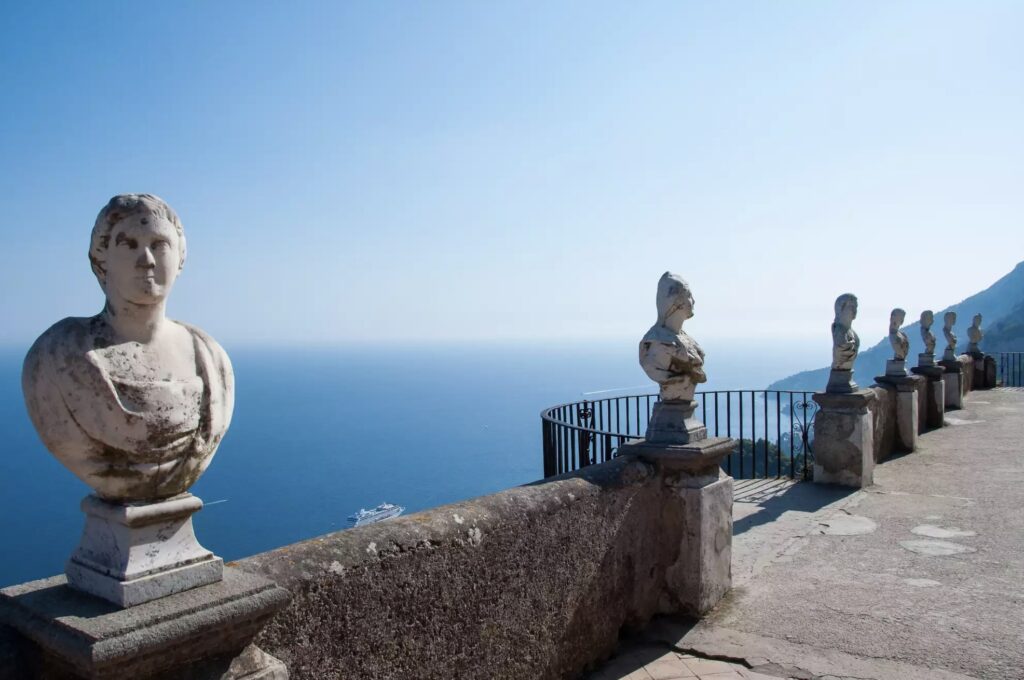
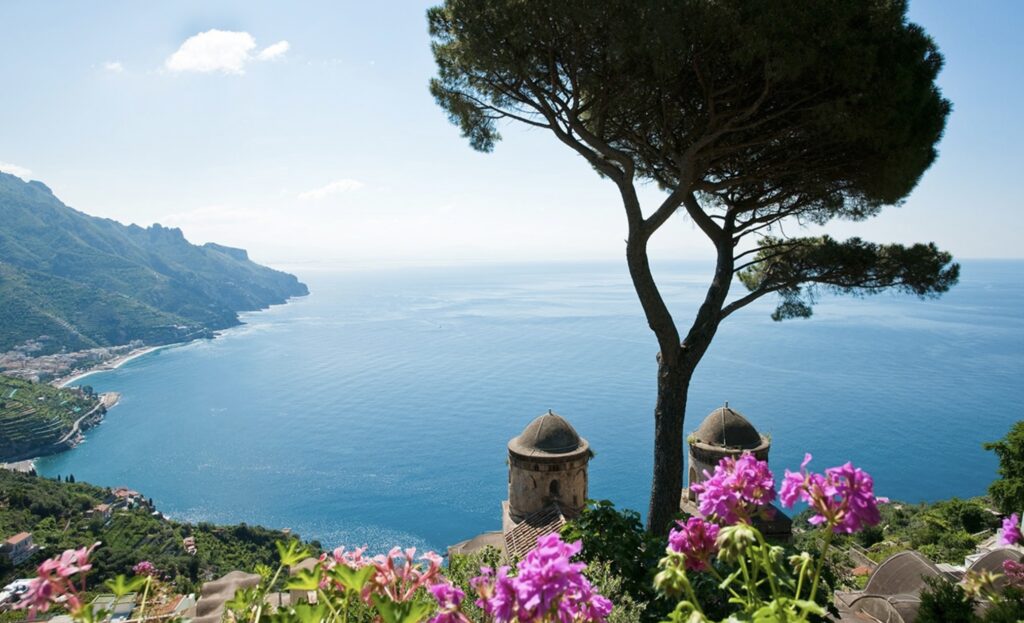
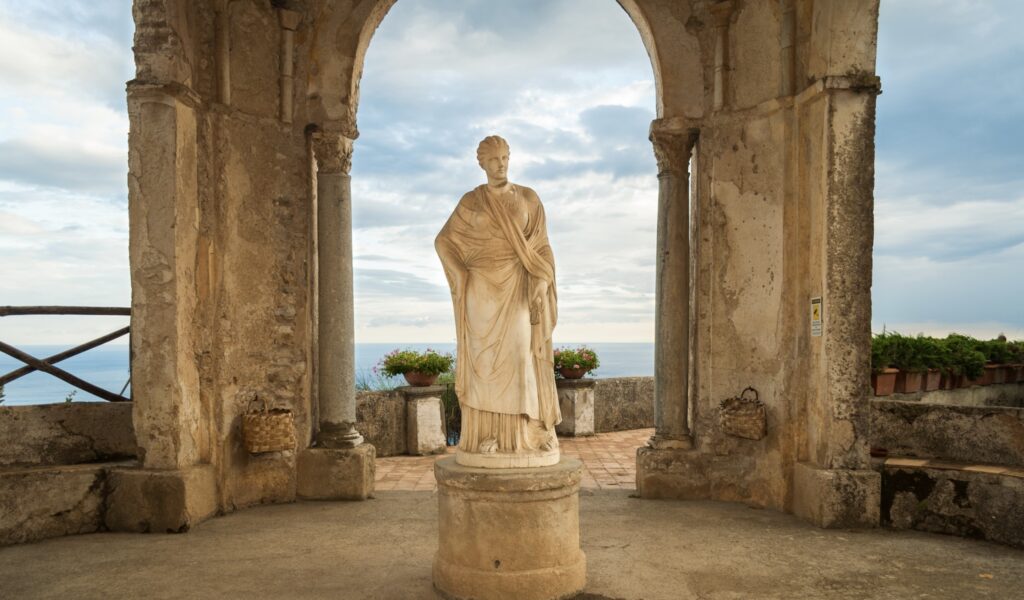
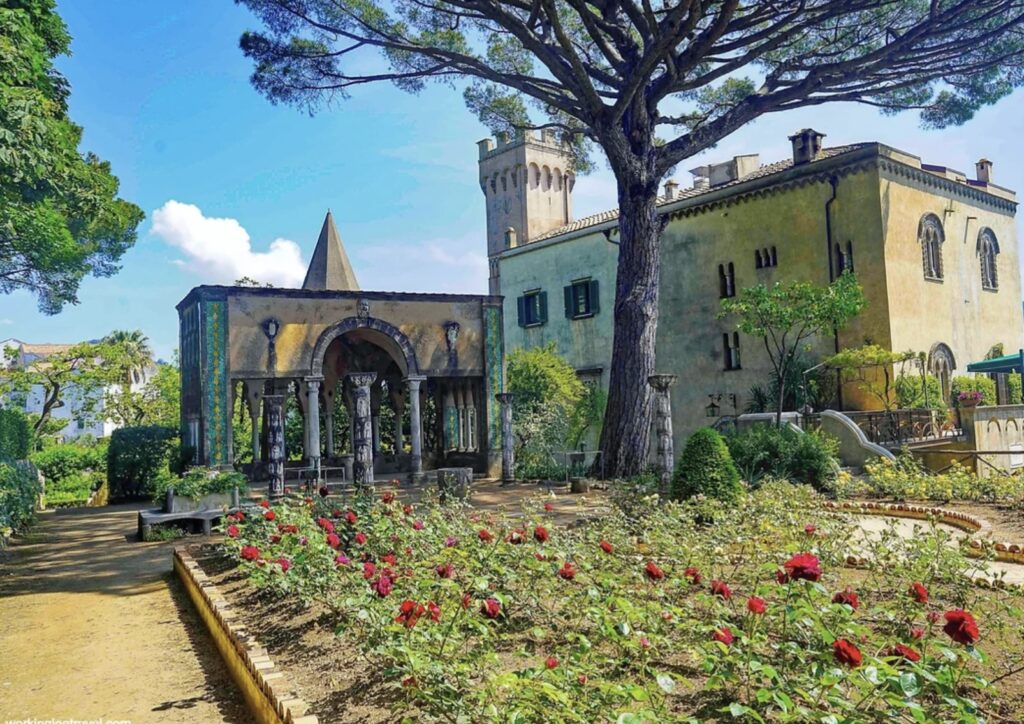
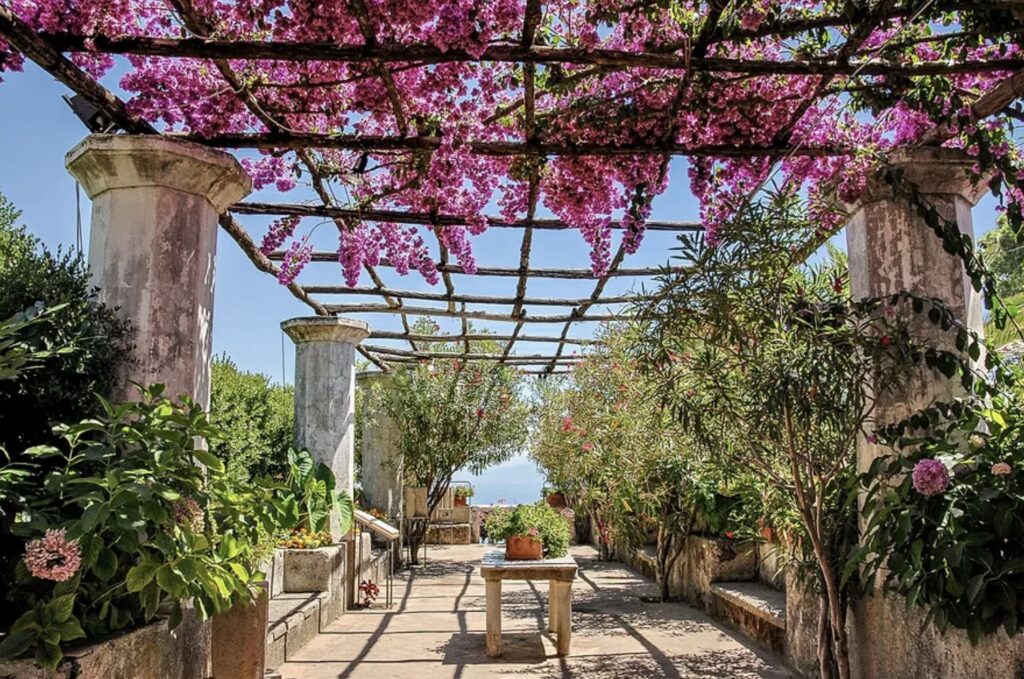
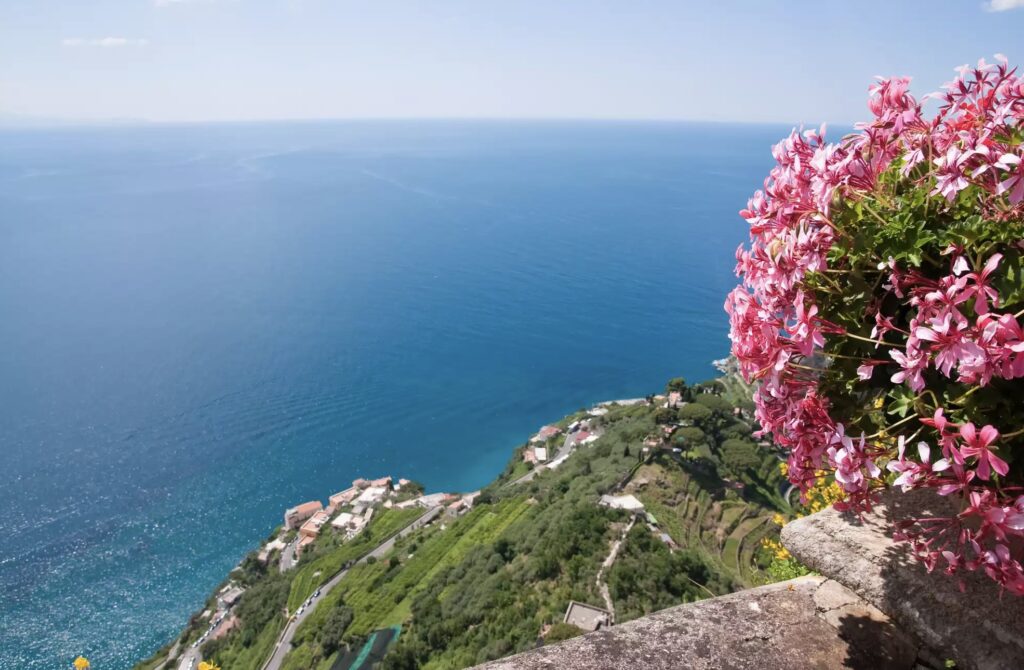
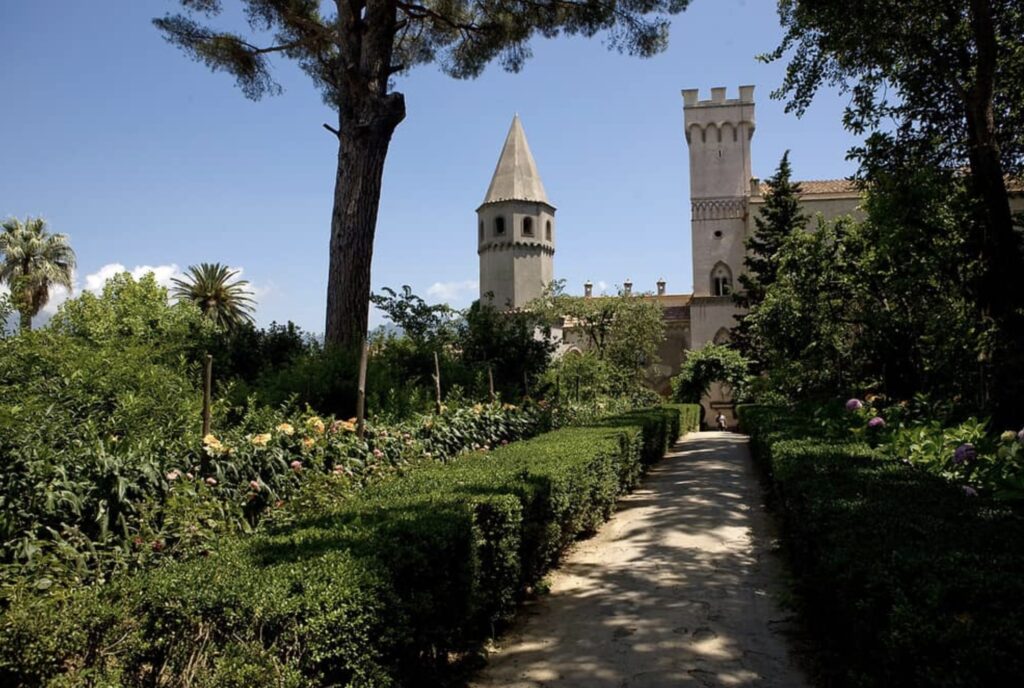
Villa Rufolo
Overview
Villa Rufolo is a historic villa situated in the heart of Ravello, near the main square, Piazza Vescovado. It is renowned for its stunning gardens, breathtaking views, and rich history. The villa dates back to the 13th century and has undergone various renovations and restorations over the centuries.
History
- 13th Century: Built by the wealthy and influential Rufolo family, who were prominent members of Ravello’s aristocracy.
- 19th Century: Rediscovered and restored by Scottish botanist Sir Francis Nevile Reid, who revitalized the villa and its gardens, enhancing its beauty and preserving its historical significance.
- Modern Era: Today, Villa Rufolo is managed by the Fondazione Ravello and serves as a key cultural and tourist attraction.
Architecture
Villa Rufolo combines elements of Moorish, Norman, and Arabic architectural styles, reflecting the diverse influences that have shaped the region’s history. Key architectural features include:
- Main Entrance Tower: An impressive medieval tower that serves as the entrance to the villa.
- Courtyard: A picturesque courtyard with a central fountain, surrounded by arches and historic buildings.
- Chapel: The villa’s private chapel, which features beautiful frescoes and architectural details.
Gardens
The gardens of Villa Rufolo are its most famous feature, often referred to as the “Garden of the Soul.” They are characterized by:
- Terraced Layout: The gardens are arranged on multiple terraces, offering panoramic views of the Amalfi Coast and the Mediterranean Sea.
- Exotic Plants and Flowers: The gardens boast a variety of exotic plants, flowers, and trees, meticulously arranged to create a harmonious and colorful landscape.
- Pathways and Pergolas: Winding pathways and vine-covered pergolas lead visitors through the gardens, providing shaded areas to rest and enjoy the views.
- Famous Views: The gardens are renowned for their stunning vistas, which have inspired numerous artists, writers, and musicians.
Cultural Significance
Villa Rufolo has a deep cultural significance and is closely associated with the arts:
- Richard Wagner: The famous composer visited Villa Rufolo in 1880 and was inspired by its gardens, which he described as the magical garden of Klingsor in his opera “Parsifal.”
- Ravello Festival: The villa’s gardens and terraces serve as one of the main venues for the annual Ravello Festival, hosting concerts and performances that attract artists and audiences from around the world.
Visitor Experience
Visitors to Villa Rufolo can explore its historic buildings, wander through the enchanting gardens, and enjoy the breathtaking views. The villa also hosts various cultural events, exhibitions, and concerts, making it a vibrant and dynamic destination year-round.
In summary, Villa Rufolo is a jewel of Ravello, combining historical architecture, lush gardens, and cultural heritage to create a truly magical experience for all who visit.
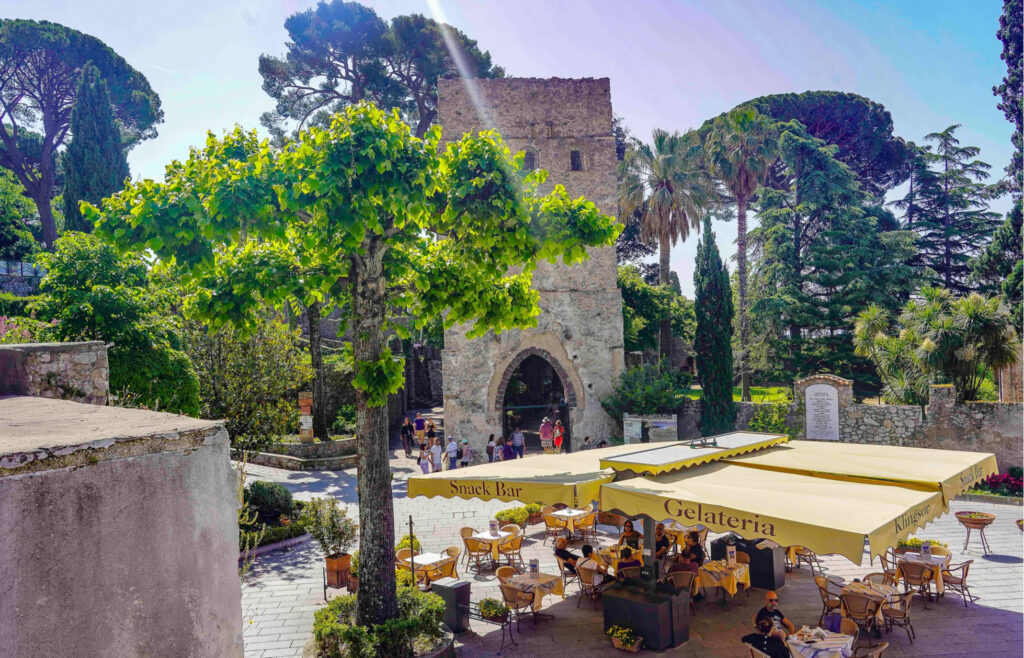
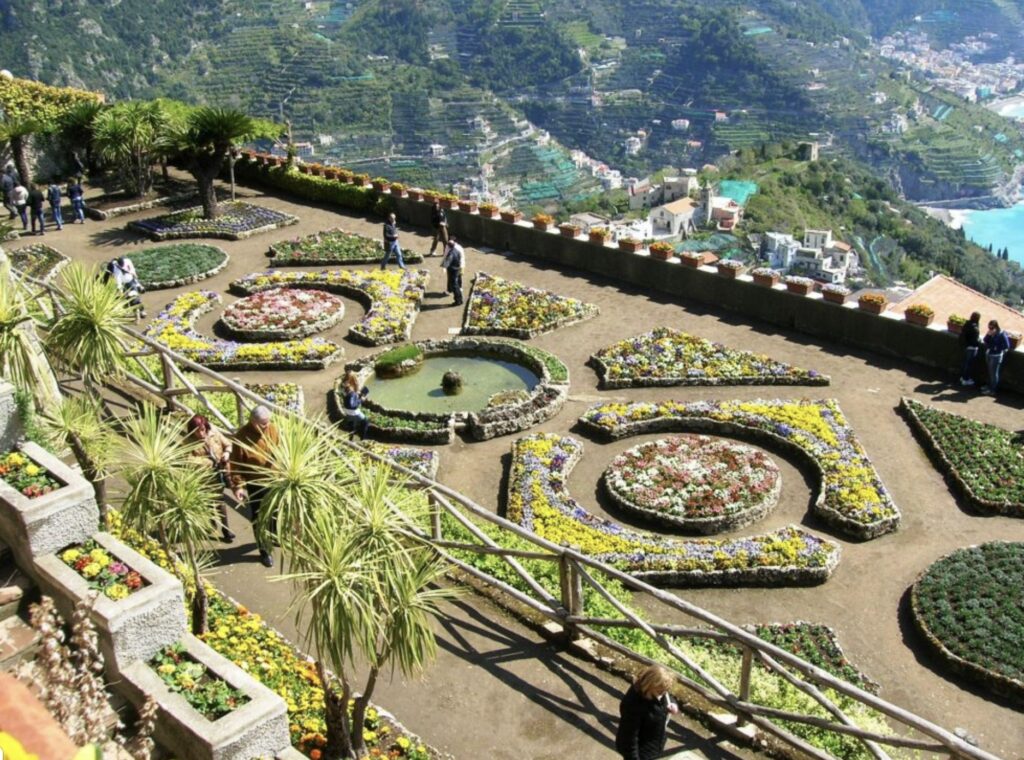
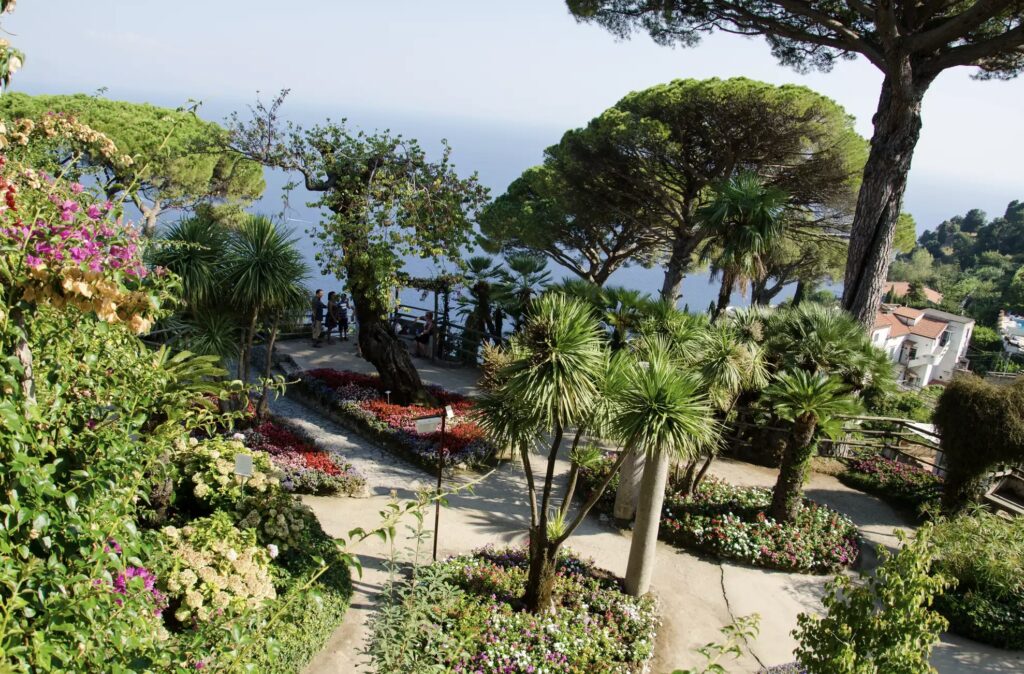
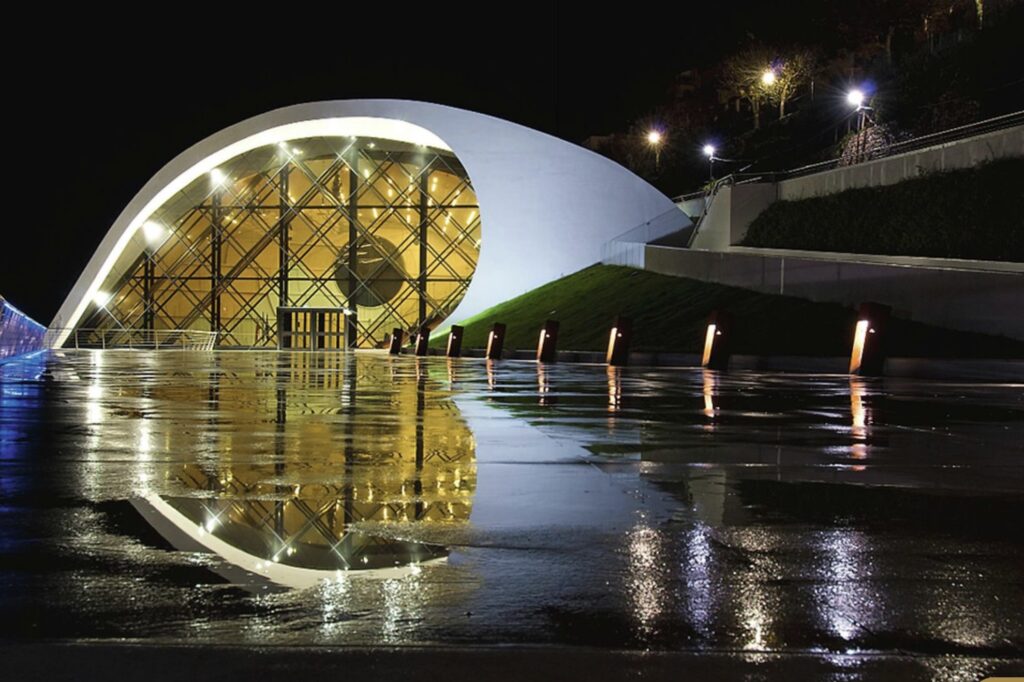
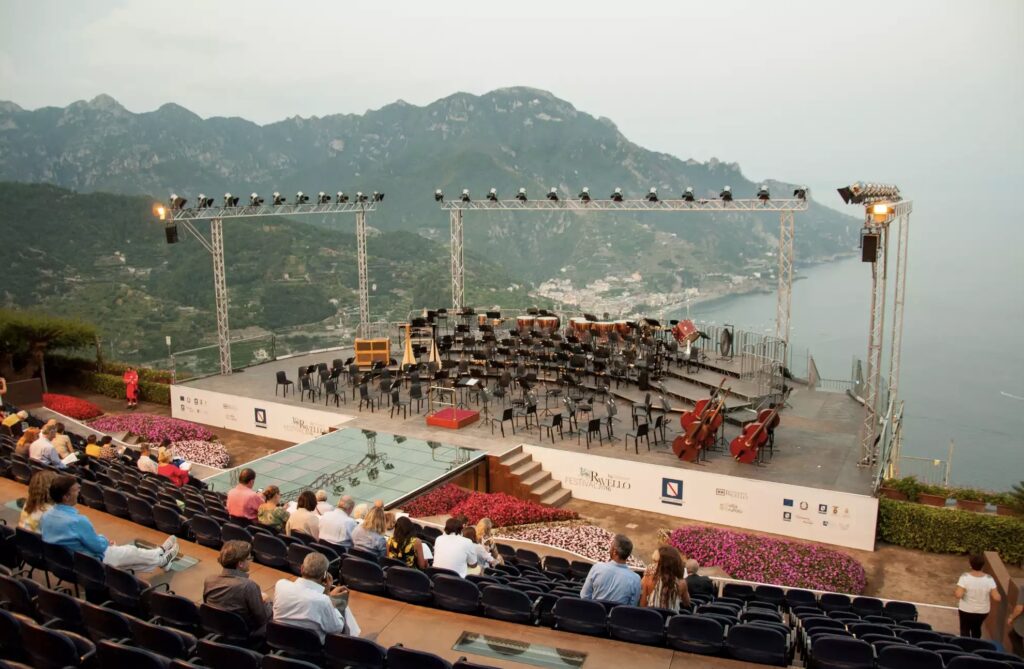
Ravello, like much of the Amalfi Coast, is known for its delicious local cuisine that emphasizes fresh ingredients and traditional recipes. Here are some local food specialties you should try when visiting:
Antipasti (Appetizers)
Bruschetta: Grilled bread topped with fresh tomatoes, basil, garlic, and olive oil.
Caprese Salad: A simple salad of fresh tomatoes, mozzarella cheese, basil, and olive oil.
Primi Piatti (First Courses)
Scialatielli ai Frutti di Mare: A type of thick, short pasta served with a variety of fresh seafood, including clams, mussels, and shrimp, often in a light tomato sauce.
Spaghetti alle Vongole: Spaghetti with clams, garlic, white wine, and parsley.
Ravioli alla Caprese: Homemade ravioli filled with fresh ricotta cheese and marjoram, typically served with a light tomato sauce.
Secondi Piatti (Second Courses)
Pesce alla Acqua Pazza: Fresh fish cooked in “crazy water” (a broth made with tomatoes, garlic, parsley, and olive oil).
Totani e Patate: Squid and potatoes, often cooked together with tomatoes and herbs.
Parmigiana di Melanzane: Eggplant parmesan, a dish of layered fried eggplant, tomato sauce, mozzarella, and Parmesan cheese, baked to perfection.
Contorni (Side Dishes)
Insalata di Limoni: A refreshing salad made with local Amalfi lemons, often mixed with olives, mint, and a drizzle of olive oil.
Fagiolini al Pomodoro: Green beans cooked with tomatoes, garlic, and olive oil.
Dolci (Desserts)
Delizia al Limone: A lemon-flavored sponge cake filled with lemon cream and often topped with lemon icing or glaze.
Sfogliatella: A crispy pastry filled with sweet ricotta cheese and candied fruit, originally from Naples but popular in Ravello as well.
Torta Caprese: A flourless chocolate and almond cake, rich and dense with a hint of orange zest.
Beverages
Limoncello: A traditional lemon liqueur made from the famous Amalfi Coast lemons, often enjoyed as a digestif.
Local Wines: The region produces excellent wines, including white wines like Fiano and Falanghina, and red wines like Aglianico and Taurasi.
These specialties highlight the fresh, vibrant flavors of the Amalfi Coast, offering a delightful culinary experience that reflects the region’s rich gastronomic traditions.
One-Day Itinerary for Ravello
Morning
9:00 AM – Arrival and Breakfast
- Piazza Vescovado: Start your day at Ravello’s main square. Enjoy a leisurely breakfast at one of the cafes, like Caffè Calce, and savor a cappuccino and a fresh pastry.
10:00 AM – Villa Rufolo
- Visit Villa Rufolo: Explore the historic villa with its beautiful gardens and terraces. Don’t miss the views from the terraces and the historical architecture of the villa.
11:00 AM – Duomo di Ravello
- Duomo di Ravello: Just a short walk from Villa Rufolo, visit the Duomo di Ravello. Admire the bronze doors, the impressive pulpit, and the Chapel of Saint Pantaleone.
Midday
12:00 PM – Walk and Shopping
- Corso Italia: Stroll along the main street, Corso Italia, browse the charming shops, and pick up some local souvenirs or artisanal goods.
1:00 PM – Lunch
- Trattoria da Cumpa’ Cosimo: Enjoy a traditional Italian lunch at this well-known local restaurant. Try dishes like scialatielli ai frutti di mare or a classic pizza.
Afternoon
2:30 PM – Villa Cimbrone
- Walk to Villa Cimbrone: Take a leisurely 15-20 minute walk to Villa Cimbrone. The walk itself offers beautiful views and a glimpse of local life.
- Explore Villa Cimbrone: Visit the famous Terrace of Infinity, stroll through the lush gardens, and enjoy the breathtaking views of the Mediterranean Sea.
4:00 PM – Coffee Break
- Caffè Cappuccini: Take a break at this café located within the grounds of Villa Cimbrone or head back towards the town center to find a cozy spot for a coffee or gelato.
4:30 PM – San Giovanni del Toro Church
- Visit San Giovanni del Toro Church: Explore this 11th-century church known for its medieval frescoes and beautiful mosaic pulpit.
5:00 PM – Leisure Time
- Relax and Explore: Spend some time relaxing in one of the town’s scenic spots or explore more of Ravello’s charming streets and hidden corners.
Evening
6:00 PM – Aperitivo
- Bar al San Domingo: Enjoy an aperitivo at this bar with a beautiful terrace offering stunning views of the Amalfi Coast. Sip on a glass of local wine or a classic Italian spritz.
7:30 PM – Dinner
- Ristorante Rossellinis: For a special dinner, dine at this Michelin-starred restaurant, known for its exquisite cuisine and elegant setting. Alternatively, Ristorante Garden offers a fantastic dining experience with great views.
9:00 PM – Ravello Festival or Evening Stroll
- Ravello Festival: If you’re visiting during the summer, check if there’s a concert or event at the Ravello Festival. Enjoy a night of music in a stunning historical setting.
- Evening Stroll: If there’s no festival event, take a leisurely evening stroll through the illuminated streets of Ravello, soaking in the tranquil atmosphere.
10:00 PM – Departure
- Return to Your Base: If you’re staying elsewhere on the Amalfi Coast, make your way back. Otherwise, retire to your hotel in Ravello for a restful night.
This itinerary covers the highlights of Ravello and provides a good mix of cultural exploration, scenic beauty, and relaxation. Enjoy your day in this beautiful town!
